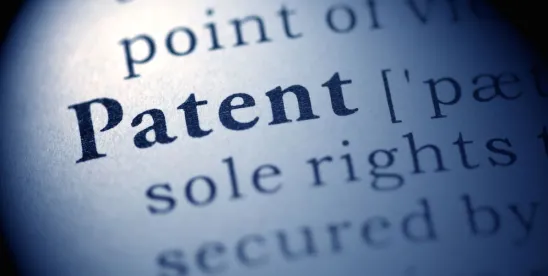The US Court of Appeals for the Federal Circuit affirmed the International Trade Commission’s (ITC) determination that the asserted process patents were invalid under the America Invents Act (AIA) because products made using the patented process were sold more than one year before the patents’ effective filing dates. Celanese International Corporation, et al. v. International Trade Commission, Case No. 22-1827 (Fed. Cir. Aug. 12, 2024) (Reyna, Mayer, Cunningham, JJ.)
Celanese owns patents that cover a process for making the artificial sweetener acesulfame potassium (Ace-K). It was undisputed that Celanese’s patented process was in secret use in Europe and that Ace-K produced using this process had been sold in the United States before the patents’ effective filing dates. Under pre-AIA caselaw, such sales of products made using a secret process before the critical date would trigger the on-sale bar and invalidate any later-sought patent claims on that process. However, because Celanese’s patents had effective filing dates after March 15, 2013, the AIA rules applied. Thus, the case hinged on whether the AIA altered this rule.
In 2019, in Helsinn v. Teva, the Supreme Court addressed similar facts and confirmed that the Federal Circuit’s pre-AIA “on sale” case law, which established that “secret sales” could invalidate a patent, still applied. In Helsinn, the patentee had obtained a patent related to a fixed dose of palonosetron. Prior to the critical date, the patentee entered into a supply and purchase agreement with a third party that covered this same fixed dose of palonosetron. The Supreme Court concluded that Congress, by reenacting similar language in the AIA concerning the on-sale bar, appeared to have adopted the Federal Circuit’s pre-AIA interpretation of the on-sale bar. Accordingly, the Supreme Court held that, consistent with Federal Circuit pre-AIA precedent, an inventor’s prior sale of an invention to a third party can qualify as invalidating prior art even if the third party is obligated to keep the invention confidential.
However, unlike in Helsinn, where the claimed invention was the very subject of the commercial sale at issue, Celanese’s patents covered the secret process used to make Ace-K, and it was only the resulting Ace-K that was the subject of commercial sale – not the patented process itself. Although this distinction would not alter the outcome under pre-AIA law, Celanese averred that the AIA had revised the rules for this specific situation. To support its theory, Celanese referenced, among other things, the AIA’s use of the phrase “claimed invention” as opposed to simply “invention” as recited in pre-AIA discussion of the on-sale bar. According to Celanese, this change implied that the invention specifically “claimed” must be on sale to qualify as invalidating prior art.
The ITC rejected Celanese’s argument, concluding that the AIA did not alter the pre-AIA rule that “a patentee’s sale of an unpatented product made according to a secret method triggers the on-sale bar to patentability.” Accordingly, the ITC found that Celanese’s patents were invalid because Celanese sold Ace-K made using its secret process more than one year before it sought the asserted patents. Celanese appealed.
The Federal Circuit similarly rejected Celanese’s arguments and concluded that the AIA did not abrogate pre-AIA caselaw regarding the on-sale bar. Thus, sales of a product made using a secret process could still invalidate later-sought claims on that secret process under the AIA. The Court reasoned that Congress’s addition of the word “claimed” was insufficient to support the “foundational change” to the on-sale bar that Celanese advocated. The Court explained that previous case law discussing the on-sale bar interchangeably referred to the invention at issue as the “claimed” invention and thus Congress’ use of “claimed invention” in this instance was merely a “clerical refinement of terminology for the same meaning in substance.”
In reaching its decision, the Federal Circuit also concluded that the phrase “or otherwise available to the public” in the AIA’s on-sale provision did not alter the meaning of “on sale” as compared to pre-AIA precedent. Likewise, the Court rejected Celanese’s arguments that other provisions of Title 35, such as § 102(b), § 271(g) and § 273(a), and the AIA’s legislative history suggested Congress intended to alter the on-sale bar.
Practice Note: This case reaffirms that the sale of products made using a secret process can trigger the on-sale bar, maintaining continuity between pre-AIA and AIA patent law on this issue. It underscores the importance of timely patent filings and the risks associated with commercial exploitation of an invention prior to seeking patent protection.




 />i
/>i
